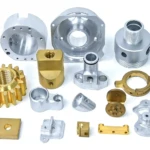In medicine, in addition to applications such as the creation of prostheses or the optimization of surgical interventions,3D printing also opens up new perspectives for research. It now makes it possible to create replicas of human tissues, thus opening up perspectives for health: manufacturing organs for transplants, studying diseases and even developing new treatments. However, despite the progress made, this field remains hampered by current technologies which do not allow the production of dense fabrics on a large scale.
Faced with this challenge, researchers at Penn State University have developed a bioprinting method based on the use of cellular spheroids (groups of cells). This method allows complex fabrics to be produced precisely and quickly, up to ten times faster than traditional techniques. The research team said this development represents a decisive step toward creating functional tissues and organs, providing new possibilities for regenerative medicine.

Bioprinting breakthrough: towards faster, more viable tissues
Bioprinting allows scientists to use living cells combined with a variety of biological materials to create3D structure. The cells multiply and transform into 3D tissue within a few weeks. “This method represents an important advance for rapid bioprinting of spheres,” says Professor Ibrahim T. Ozbolat of Penn State. He added that the technology could produce tissue faster and more efficiently than current methods while maintaining good cell viability.
Cell density is important in creating functional tissues. Spheroids therefore offer an interesting option because their cell density is close to that of human tissues. However, despite3D printing spheres seemed to be an effective solution to achieve this density, but the researchers ran into difficulties. This is because current technology often damages cells during the printing process, reducing their viability. To solve this problem, the team developed a new method called HITS-Bio (High-Throughput Integrated Tissue Fabrication System for Bioprinting). The system uses a network of nozzles that allows multiple spheres to be manipulated simultaneously. By arranging the nozzles in a 4×4 grid, the team was able to pick up 16 spheres and deposit them onto the bioink substrate quickly and precisely. Mr. Ozbolat explained: “This method is ten times faster than existing methods while maintaining cell viability above 90%.
To test their technology, the team chose to produce cartilage tissue. They created a small structure of one cubic centimeter made ofComposed of 600 cellular spheres that can transform into cartilage. The process is completed in less than 40 minutes, much shorter than traditional bioprinting methods.
Daguang focuses on providing solutions such as precision CNC machining services (3-axis, 4-axis, 5-axis machining), CNC milling, 3D printing and rapid prototyping services.
















